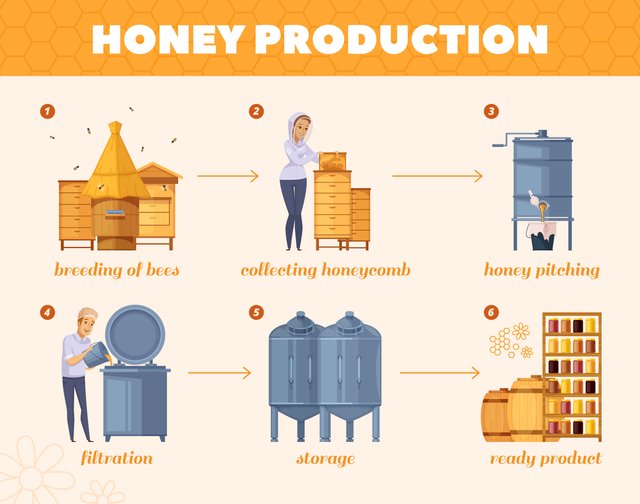Remarkable Process of Honey Production by Honey Bees
Gathering Nectar:
Worker bees leave the hive and visit flowers to collect nectar using their long tongues (proboscis). They can visit hundreds of flowers during a single foraging trip.
Storing Nectar:
The collected nectar is stored in a specialized stomach called the crop or honey stomach. During this process, enzymes from the bees start breaking down complex sugars in the nectar.
Returning to the Hive:
Once a forager bee has gathered a full load of nectar (which can be about 70 mg per trip), it returns to the hive.

Passing Nectar:
Back at the hive, the forager bee regurgitates the nectar into the mouth of a younger house bee. This house bee then further processes the nectar by adding enzymes and reducing its water content through repeated regurgitation and evaporation.
Honey Storage:
Once the nectar has been sufficiently processed and its moisture content reduced to about 17-18%, it is sealed into honeycomb cells with beeswax caps.
Ripening:
The honey matures in the comb as bees fan their wings to create airflow, further reducing moisture and thickening the honey.
Harvesting:
Beekeepers harvest honey by removing honey-filled frames from the hive. The honeycomb cells are uncapped, and the honey is extracted using centrifugal force or by crushing and straining.
Yield:
On average, it takes about 556 worker bees to gather enough nectar to produce one pound of honey. In a productive season, a strong hive with tens of thousands of bees can collect and store between 30 to 100 pounds of honey.
Factors such as weather conditions, the availability of nectar-producing plants (nectar flow), and the overall health and strength of the colony greatly influence honey production. Beekeepers often manage hives to maximize honey yield while ensuring the health and well-being of the bees.